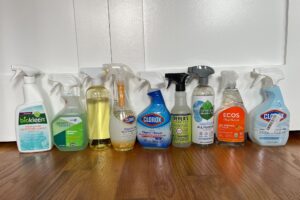Preventative care is essential to extending the life of your sofa and maintaining its appearance. By implementing a few simple DIY strategies, you can protect your sofa from everyday wear and tear, spills and stains, so that it remains a comfortable and stylish part of your home for years to come. In this article, we look at practical tips to prevent damage to your sofa and keep it looking its best.
Use covers and throws
One of the most effective ways to protect your sofa is to use a cover or throw. Covers protect fabrics from spills, stains and pet hair, while throws add an extra layer of protection and style. Choose covers that are easy to remove and wash so that they stay clean. For added convenience, choose a waterproof or stain-resistant cover if you are concerned about heavy use or frequent spills.
Vacuum and dust regularly
Regular vacuuming is essential to prevent dust and dirt from building up on your sofa. Use a vacuum with a brush attachment to gently clean the surface and crevices of your sofa. This will help prevent dirt from settling into the fabric and causing damage over time. Additionally, wipe your sofa down regularly with a soft cloth to remove loose particles and maintain a fresh look.
Treat spills and stains promptly
Accidents happen, but by addressing spills and stains promptly, you can prevent them from becoming permanent accidents. Blot up spills with a clean, dry cloth, absorbing as much liquid as possible before it soaks into the fabric. For most stains, you can remove the stain with a mixture of water and mild dishwashing detergent. Use a soft cloth to apply the solution from the outside of the stain inward to prevent spreading the stain. Rinse the area with a damp cloth and blot dry. For more serious stains, use a fabric-specific cleaner and always test any product on a hidden area first.
Rotate and flip seat cushions
To ensure that your sofa wears evenly and maintains its shape, rotate and flip the cushions regularly. This exercise helps distribute the weight evenly and prevents some areas from wearing out faster than others. If your sofa has removable cushions, you can flip and rotate the sofa every few weeks to ensure even use.
Protect from sunlight and heat
Over time, direct sunlight and heat sources can cause fabric and leather sofas to fade and dry out. To prevent this, keep your sofa away from direct sunlight and heat sources such as radiators or fireplaces. If your sofa is exposed to sunlight, consider using curtains or UV blocking film to reduce sun damage. Keeping your sofa in a stable, temperature-controlled environment will help preserve its color and texture.
Use a fabric protector
The fabric protector provides a barrier against spills and stains, making it easier to clean up before an accident occurs. Apply fabric protector spray according to the manufacturer’s instructions and reapply as needed. These sprays can help repel liquids and prevent stains from penetrating the fabrics, making regular cleaning easier.
Maintain proper seating habits
Encouraging good seating habits can reduce the wear and tear on your sofa. Avoid sitting in the same position all the time, as this can lead to uneven wear. Also, avoid activities such as eating or drinking on the sofa, as this can lead to spills and stains. Using coasters and trays can help keep food and drinks on the sofa and minimize the risk of accidental spills.
Check for damage
Regularly check your sofa for signs of damage, such as loose seams, worn areas, or scratches. By fixing small problems quickly, you can prevent them from becoming major problems. For small tears or frayed edges, you can repair them with a fabric repair kit or with a needle and thread. If you notice serious damage or structural problems, consult a professional interior designer for repairs.
Conclusion
Implementing preventative care strategies is key to keeping your sofa looking beautiful and functional. You can prevent damage to your sofa and extend its life by using covers and slipcovers, vacuuming regularly, cleaning up spills promptly, and protecting your sofa from sunlight and heat. Simple habits like rotating seat cushions and checking for damage can also help keep your sofa in good condition.



